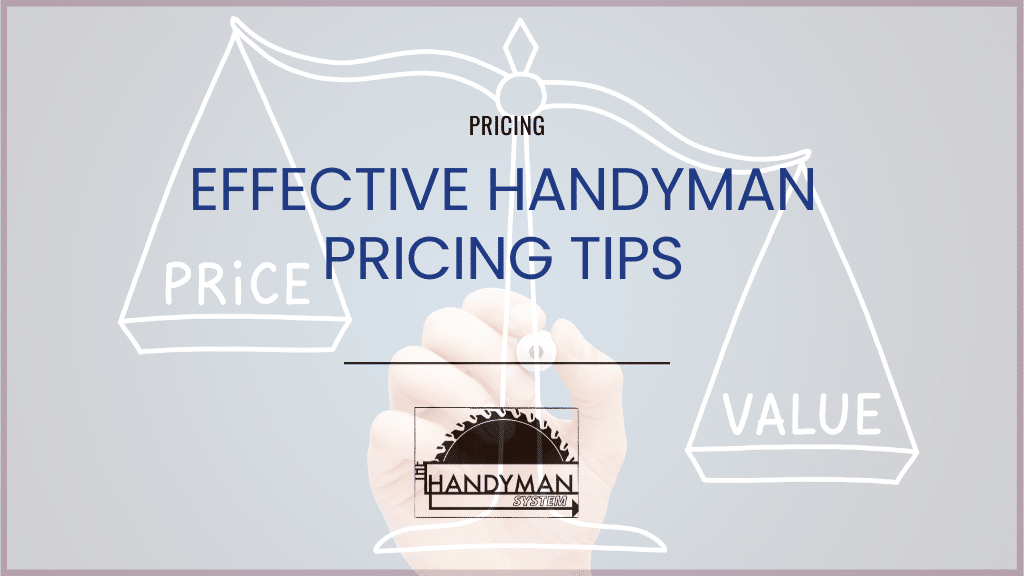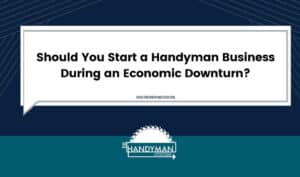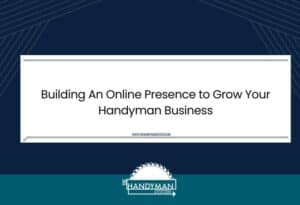Effective Handyman Pricing Tips

Pricing your handyman services properly is critical to the success and profitability of your business. Charge too little, and you risk working hard without seeing the financial rewards. Charge too much, and you could scare away potential clients. Striking the right balance requires understanding your true value, knowing your costs, and being strategic about how you structure your pricing.
Here are key pricing tips to help you set competitive rates, maximize profits, and grow your handyman business sustainably.
1. Understand the True Value of Your Services
Before you set any pricing, it’s essential to evaluate the full value you bring to your clients. Your experience, skills, professionalism, and reliability all contribute to how clients perceive your services. Consider what sets you apart from competitors—perhaps it’s your attention to detail, excellent customer service, or ability to tackle specialized tasks. These factors can justify a higher rate.
The problem is, most handyman businesses do a poor job of conveying your value to your customers. Which leads the customers to make their own assumptions, and that rarely works in your favor as the business owner. It’s up to you to convey your value to your customer BEFORE they hire you. Which is most easily done through your website and your online reviews.
An online presence also plays a major role in shaping how clients perceive your value and should not be overlooked . A professional website, positive reviews, and a solid Google My Business profile can significantly elevate your business in the eyes of potential clients. By investing in an optimized online presence, you enhance trust and establish yourself as a credible, high-value service provider.
Most handyman businesses overlook the value of having a solid online presence, and how a good website can be a 24/7 sales person for you. Helping you build a client base and interested leads at all hours of the day. When you build your website to explain your process, what you value, and what you’re good at, it instantly makes you stand out… since most other handyman businesses skip it all together.
For help with building a valuable website, you can learn about our websites built to convert and bring you leads. Check out our Ready Roll SEO website services, which can boost your local visibility and ensure your business is positioned as a top choice in your area.
2. Starting with Hourly Work
When you’re just starting, pricing your work hourly is a smart way to go. This allows you to track how long specific tasks take, helping you refine your estimates for future jobs. It also ensures you’re compensated for your time, especially on tasks that might take longer than expected.
One of the most frustrating things I hear from my handyman coaching clients is that they under bid a job, and they ended up taking a ton more time- which in turn hurts their profitabiliyt.
This happens a lot at the beggining, especially if you start with bid work. As you don’t have the experience to know just how long something might take you to complete. This is where hourly work is effective. You get paid for your time even if it takes longer.
But… as you get more efficient and better at your tasks, hourly starts to work against you. As you end up making less, because you are really good. Now, you can fix this by charging more per hour – our shift to a bid rate pricing system once you’re efficient at the task
3. Transitioning to Bid Work for Greater Profitability
Once you’ve gained experience and can complete jobs faster, consider transitioning to flat-rate or bid work. This pricing strategy can be more profitable because, as you become more efficient, you can complete jobs in less time without having to lower your price.
The other benefit to bid work is that clients are less nit picky. With hourly work, the client is going to be watching how quickly you are working as they don’t want you to be slow and cost more… but with bid work they are confident in what they are paying no matter how quickly or slowly you complete the task.
Another reason clients generally prefer bid work because our culture has shaped the expectation that “a price is a price.” Fixed pricing is clear, avoids the uncertainty of hourly billing, and clients are less likely to negotiate when they see a set price for a service. People also tend to feel more comfortable with a known cost upfront, which builds trust and helps close sales more easily.
Bonus tip: When setting fixed prices, choose a number that doesn’t end in zero. For example, instead of charging $300 for a job, set the price at $298. Clients perceive prices that don’t end in round numbers as more specific and thoughtfully calculated. As a result, they’re less likely to push back or haggle over the price.
To help calculate accurate pricing for bid work, you can use The Handyman System’s Pricing and Projections Guide, which will help you determine what your minimum hourly rate needs to be in order to stay profitable on all projects.
4. Calculating Your Rates Accurately
The next step to getting the right rate is understanding your costs. You’ll need to account for both fixed and variable expenses, such as tools, materials, transportation, insurance, and any administrative overhead. You should also factor in your desired profit margin to ensure long-term business growth.
Your fixed expenses are expenses that you pay every single month, no matter if you have work or not. A list could include:
- Your business insurance and bond
- Tools
- Storage Space
- Vehicle
- Vehicle Maintenance
- Website costs
- Accountant
- Office Expenses
- Advertising costs
- Cell Phone Service
- Accounting Software like Quickbooks
- Field Service software like Field Pulse
- Marketing and Automation Software like Service Biz Builder
- A business coach
Add up all your fixed expenses by the cost per year, and then divide by 12. You’ll have your average monthly expenses.
Now we get to your variable expenses which is usually variable depending on what you’ve booked. This can be the cost of gas, and the building materials that you purchase for a job.
Now the materials for the job will be paid back by your clients (and should be marked up at least 25% from your cost) but they are still expenses you have to carry until your client has paid you back. These job related expenses are called COGS – or cost of goods sold and should be calculated.
The best option is to look at your history of expenses to see what your average is for COGS, but if you are just starting out, I find it’s common to have your COGS be approximately 20-30% of your labor costs.
To simplify this process, use The Handyman System’s Pricing and Projections Guide, which helps you break down all the necessary costs to find your minimum profitable hourly rate. This tool ensures that you’re not only covering your expenses but also setting rates that allow your business to thrive.
BONUS TIP : It doesn’t matter if you plan on pricing hourly or via bid. You still need to know what your minimum hourly rate is. This allows you to easily calculate bid rates on the fly, as well as the confidence to turn a job down if they hourly rate is too low.
For example, if you figured out via our Pricing and Projections Guide that you need to charge the equivilant of $100 an hour to make sure your bills are paid, your paycheck is paid and you have enough for taxes AND a profits account… then when someone counters an offer with the equivilant of $85 an hour… it becomes a swift and confident no.
It’s when you don’t know your numbers, and you say yes to work that you can afford to say yes to that you end up with a very busy calendar… and a very empty bank account.
5. Research Local Market Pricing
Pricing varies greatly depending on your location, so it’s important to research what other handyman businesses in your area are charging. If you’re in a high-demand, affluent area, you can likely charge more. In contrast, in lower-demand markets, you may need to be more competitive.
Go online and find the businesses that show up on the front page of Google, and in the Google maps listings. These are the people who have a plethora of business, and will be charging the appropriate going rate. Find out what their rates are, and you’ll know what your market can handle.
Take time to understand the local economy, your ideal customer, and where your pricing fits into the local market. This will help you set rates that are both competitive and profitable.
The last thing you want to do is ask your customer though. They don’t know, and they will obviously default to less expensive if that is an option available to them. Customers will pay a premium price if they believe they will be getting a premium service, so keep that in mind when doing your research.
6. Offer Transparent and Tiered Pricing
Clients value transparency, and being upfront about your pricing can build trust. Consider offering tiered pricing based on the level of service provided. For example, you can create packages that include basic, standard, and premium service options, allowing clients to choose the level of service that suits their needs and budget. For instance, offering same-day service or emergency repairs at a premium rate can add an additional revenue stream, while giving clients more flexibility.
7. Managing Discounts and Promotions
While you don’t want to devalue your services, offering strategic discounts can be a smart way to attract new clients and encourage repeat business. For example, first-time customer discounts or seasonal promotions can boost business during slower months.
Or creating a door hanger flier that you leave on the doors of the homes near where you were just working. Leave a 1 time discount of services on the door hangar, and that person will be more likely to reach out. It’s always better to base set at a good rate that allows you to be profitable and offer a 1 time discount to get a new client in the door than to start low and then fight to raise your prices in the future.
Additionally, offering bundled services, such as regular home maintenance packages, can keep clients coming back while providing consistent cash flow for your business.
8. Adjusting Prices Over Time
As your business grows, you’ll likely need to adjust your prices periodically to account for increased demand, inflation, or improvements in the quality of your service. When doing so, be sure to communicate these changes professionally to your clients. Explain why the price is increasing, whether due to rising material costs or enhanced service offerings.
It’s a good idea, when you share that your price is changing, to give past clients a 1 time last option to hire you at the previous rate. This way they feel like they are getting a deal one more time, and the next time they reach out, they won’t be put off by your new pricing.
Setting the right price is both an art and a science. Starting with hourly rates can help you gauge how long jobs take, but transitioning to bid work as you become more skilled will lead to higher profits. By knowing your costs, understanding your market, and offering transparent pricing, you’ll be able to set rates that reflect the true value of your services.
Make sure to leverage The Handyman System’s Pricing and Projections Guide to ensure that your rates are not only competitive but profitable. And don’t forget the power of an optimized online presence—our Ready Roll Website + SEO services can help boost your visibility, giving potential clients the confidence that your services are worth every penny.








